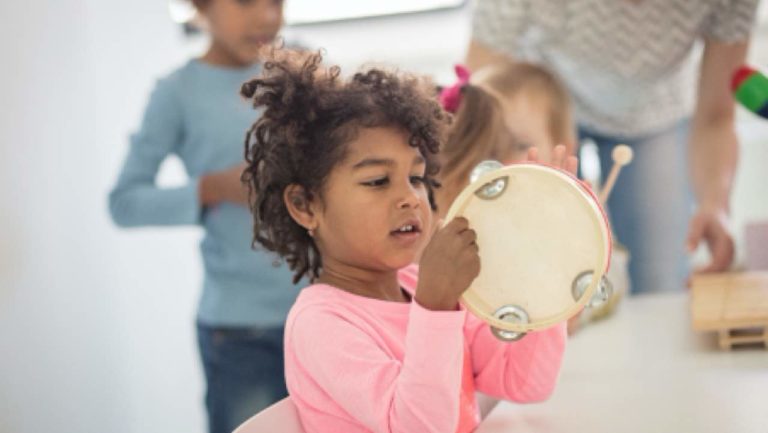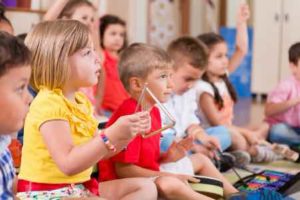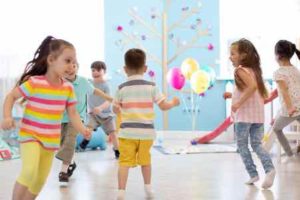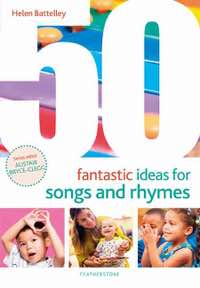Guest post
The Importance of Music and Movement
Posted on March 25, 2021.
Guest post by Helen Battelley
We only need to stop and observe young children to see how movement is embedded within the very core of all early childhood development. Physical activity broadens our capacity to grow and is essential to a child’s optimal development.
However, living in a global pandemic has changed the way children access movement play. During 2020 and 2021, children had fewer opportunities for physical play with play parks, extra-curricular clubs and leisure centres closed. Research indicates many young children’s physical activity levels and play experiences diminished during lockdown, particularly for those living in urban areas alongside minority ethnic groups (The Sutton Trust, 2020; Ofsted, 2020).
Why is music and movement so important in early childhood?
Musical play and movement play with music are significant forms of play and are used in all cultures. There is an abundance of evidence to support the role of an infant’s innate response to rhythm and sounds in establishing early communicative abilities. Introducing young children to rhythm and musical experiences is keenly associated with developing language and reading skills, and the ability to perceive and produce rhythm. In 2005, a fascinating study carried out by Phillips-Silver and Trainor tested infants’ movement responses to auditory encoding of rhythmic patterns. The study identified babies and infants had the ability to feel rhythm in their bodies, presenting a physiological response to music, further reiterating music is an intrinsic part of our being and a powerful tool for motivation.
The benefits of musical play are seen in a wide range of children’s developing abilities, including those related to social interaction, communication, literacy, emotional understanding, memory, self-regulation and creativity (Kirschner and Tomasello, 2010). We can observe the power of music in our own lives, by seeing how certain songs evoke memories and responses. My go-to song to uplift and motivate me is ‘Chain Reaction’ by Diana Ross!
How can we best support young children in a post-COVID world?
Primarily, we will need to be available and aware of the potential challenges each individual child may have encountered and allow time for children to develop relationships and social skills above all else. Ensuring your provision is developmentally appropriate is essential. The components of DAP (Developmentally Appropriate Practice) are:
- Child development and learning pedagogy
- Each child as an individual and unique
- The cultural and social contexts of each aspect of a child’s environment
- Moving away from a ladder of progression mentality and adopting a more holistic approach, and an interweaving of the developmental processes
Simple activities that you can do with children
Start with simple, fun activities which can be further developed at home. For example, you can make a paper fortune teller and add a physical activity or action rhyme behind each number i.e. 10 star Jumps. Children can progress to make their own fortune tellers, promoting agency over the activity and encouraging their own creativity. Here is a link that shows how to make a fortune teller. Once created, simply add your activity behind the numbers.
Combine ideas with movement
Ideas that are communicated in parallel with actions (e.g. gestures and actions) are remembered better because general memory ability is enhanced by physical exercise (Madan and Singhal, 2012).
The more elements used within an activity will determine the vividity of the memory, triggering our auditory and visual memory which will be enhanced if we use gestures, a third component.
Here is an example of gesture associated rhyme.

Discover music with children
Listening to music together can be a shared, inclusive experience and promotes social bonding. Try creating some simple activities using music for motivation or as a rhythmic tool. Here’s an idea: Play Bjork’s ‘Oh So Quiet’ and invite children to travel around the space. When the music is quiet, encourage them to travel slowly (e.g. creeping or tiptoeing) and when the music is louder suggest they make larger and noisier movements (e.g. stomping, skipping or jogging).
Click here for an activity to introduce young children to musical instruments.
How does movement play support child development?
Anthropologists and the World Health Organisation suggest prolonged periods of sedentary behaviour (e.g. sitting) in early childhood reduces the ability to learn from experiences and produces developmental delays. Higher levels of physical activity during early childhood are associated with improved health outcomes, whereas sedentary behaviour is associated with poorer health outcomes. Prolonged periods of sedentary time and a lack of socio-dramatic play are also associated with an increased risk of loneliness, social anxiety and depression in children and adolescents. We must evaluate how much time children are spending in sedentary positions and make changes and choices to reduce that time.
As parents or educators, we can often feel the need to rush children to the next milestone. But children need time and space to develop relationships and connections to become feeling and thinking human beings. And they mainly learn through first-hand experiences: through interaction with their peers, objects around them and the wider environment. To support early language skills children must experience diverse vocabularies and language rich environments of stories, rhymes and actions songs before focusing on literacy outcomes (Pascal, 2018). The more diverse experiences a child encounters, the further learning potential.
Sources
Ofsted (2020) COVID-19 series: briefing on early years, October 2020. Available here.
Pascal, C., Bertram, T., Cullinane, C., Holt-White, E. (2020) COVID-19 and Social Mobility. Impact Brief #4: Early Years. The Sutton Trust. Available here.
Phillips-Silver, J. & Trainor, L.J (2005) Feeling the beat: movement influences infant rhythm perception.
Kirschner, S. & Tomasello, M. (2010) Joint music making promotes prosocial behavior in 4-year-old children. Evolution and human behaviour.
Madan, C. R., & Singhal, A. (2012). Using actions to enhance memory: effects of enactment, gestures, and exercise on human memory. Frontiers in psychology, 3, 507. Available here.
Pascal C., Bertram T. and Peckham K. (2018) DfE Review of Evidence on EYFS Early Learning Goals, Teaching Content and Pedagogy in Reception Year. DfE: London.
Helen Battelley is an internationally renowned Early Years consultant, trainer and author. Helen is the Founder and Director of Music + Movement, which delivers dance and movement workshops for children and CPD for practitioners.
She is the author of 50 Fantastic Ideas for Songs and Rhymes, a dip-in collection of rhymes, action songs and funny verse that come with tips and fun ideas to make the most out of the song. Find out more about Helen’s work here www.musicandmovement.org.uk and follow her on Twitter @musicandmove



